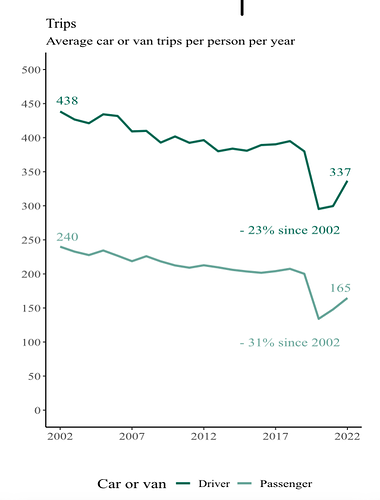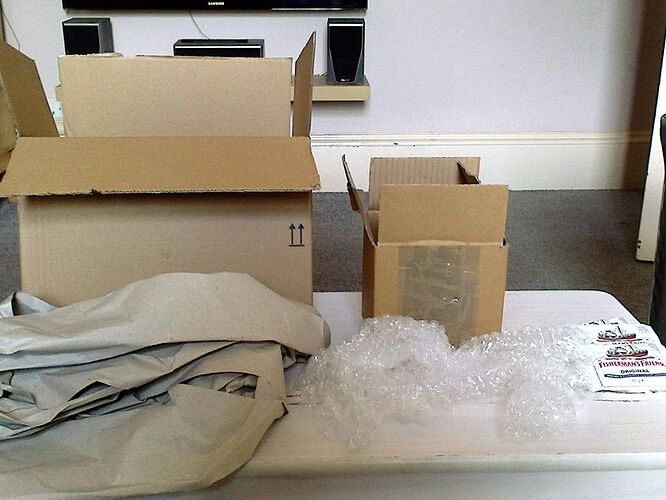Where I am really seeing the difference is the reduction of the number of mopeds that you see. They are ideal for that local commuting and much cheaper to run.
I don’t think either of these are true.
i) ‘How long it takes an electric car to reach net-zero’ is a logical impossibility, it never has a period of negative emissions to offset production emissions - @RedWhippet is correct in that regard. But secondly, the emissons savings are overwhelming a function of the generation of the electricity. If the electricity it uses is generated with coal, the emissions savings are underwhelming. If photovoltaics, they are impressive.
ii) If you think the average life expectancy of a Tesla battery is 10 years…Tesla battery warranty is instructive, 70% at 120 000 miles (the real determinant is charge cycles). The battery will probably still be operating at the 10 year mark, but it will be well below the original performance. Fleet experience with Teslas has not been particularly positive, viz. the Hertz experiment.
Anyway, here is a post debunking some of those claims Debunking the Caterpillar meme – Son of GeekTalk
When I got a car recently I considered an electric vehicle, for environmental reasons. I’m no expert, but after digging into it a little, I thought the ‘gains’ were not as large as expected, and when added to range anxiety issues, I decided to go with a hybrid.
It has an electric motor and a petrol engine, and they work together, so the electric motor is replenished under braking and coasting. Electric is used to start up and crawl along too.
I don’t have to plug it in to charge, it’s all self-contained, and the outcome is that I seem to get about 15mpg better mileage. It’s a solid improvement, and I don’t have the drawbacks of an entirely electric vehicle.
Edit
My take on electric vehicles so far is that they have improved a good deal from the very first ones, but there is still a long way to go. It is unfair to expect them to be at their best when as an industry it is still in its relative infancy.
I’m not entirely sure if it is the right power source, ultimately, but the effort to move away from oil is commendable, even if it has its own drawbacks.
I think that is a fairly sound decision. Living in Indiana, your electricity is not particularly clean at 0.7412 t CO2/MWh (about 6x the emissions of California) versus my choice in Quebec at 0.0002 t. Add in the infrastructure issues and the simple fact that people in the Midwest, like much of the US, drive significant distances rather casually, and an electric car is a lot of hassle for not that much of an environmental benefit.
Now we’ve got garbage lasagnas. Far more CO2 than originally predicted:
if they worked on capturing that methane, free gas for heating…
It is actually now required in Quebec.
This seems like a hopeful trend (that I wasn’t previously aware of), car journeys significantly reduced since 2002 in the UK, distance down by a similar percentage as well.
The maun replacement for the internal combustion engine on passenger cars is likely to be fibre optics.
Think you’re bang on there. I always thought the gov should have prioritised internet infrastructure over transport; ie HS2.
The government economists were saying this as far back as the early 2000s.
I’m not sure where to put this. The picture is a few years old but it is a demonstration of why having a tax on packing materials wouldn’t be a bad idea.
It may not be entirely obvious, but I had ordered 3 packs of Fishermen’s Friends:
Ok positive article but its a bit disingenuous sadly.
Recycling cement from demolition arisings is not new. Even crushing the arisings and using that in your new concrete as aggregate is possible.
All of this falls down a bit in two areas.
-
The carbon involved in processing your demolition arisings and then transporting it to a furnace and then moving it to your batching plant within 45 minutes travel of your site. Batched concrete has a limited lifespan before you have to reject it.
-
Design codes currently limit the amount of recycled cement aggregates that can be used. That can be changed of course.
-
The time for all of this to occur versus your projects concrete demand requirements.
Basically what this means is that for this to work demo arisings need to be captured and delivered to specific recycling points and then delivered out to the numerous batching plants from there. Thats a whole new side shoot to the industry that needs to be created. Not impossible, but its not happening tomorrow either. Worth noting many batching plants already use blast furnace slag as a part cement replacement which has substantial benefits to the concrete you produce, including reducing carbon.
We had temperatures in the high 90s over the weekend (around 36 degrees C). It is rare we get them that high even in the height of summer and so bodes really poorly for it to get that hot this early.
An excellent article on a subject few link with the current climate disaster:
52.9C in Delhi ![]()
![]()
Not even close to the 60°C I get in my garden in august!
Just saying.
The advantage is no need to heat water for a bath, leaving the disadvantage being having to cool lots of water in the fridge.



